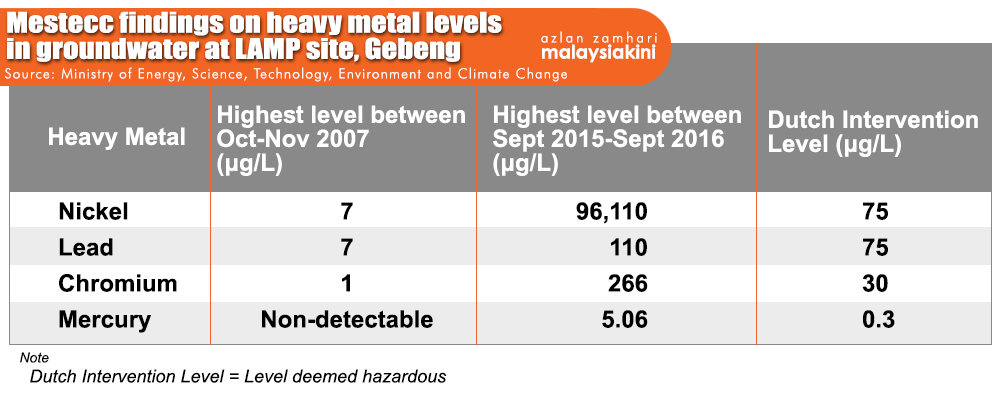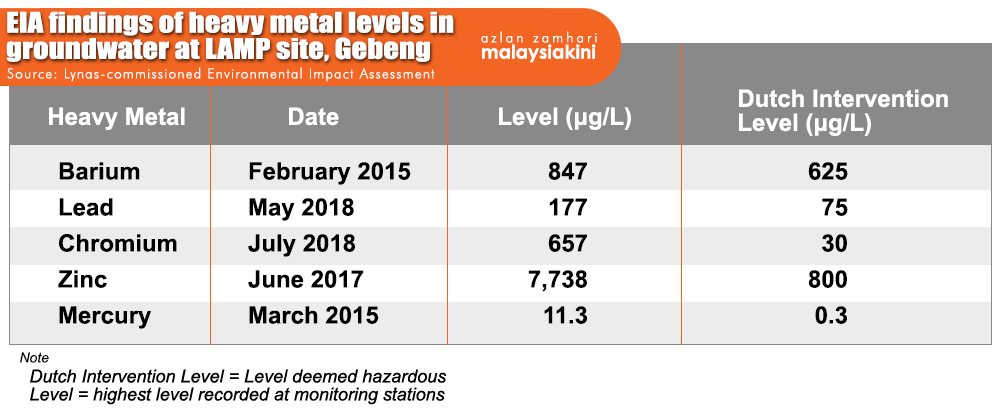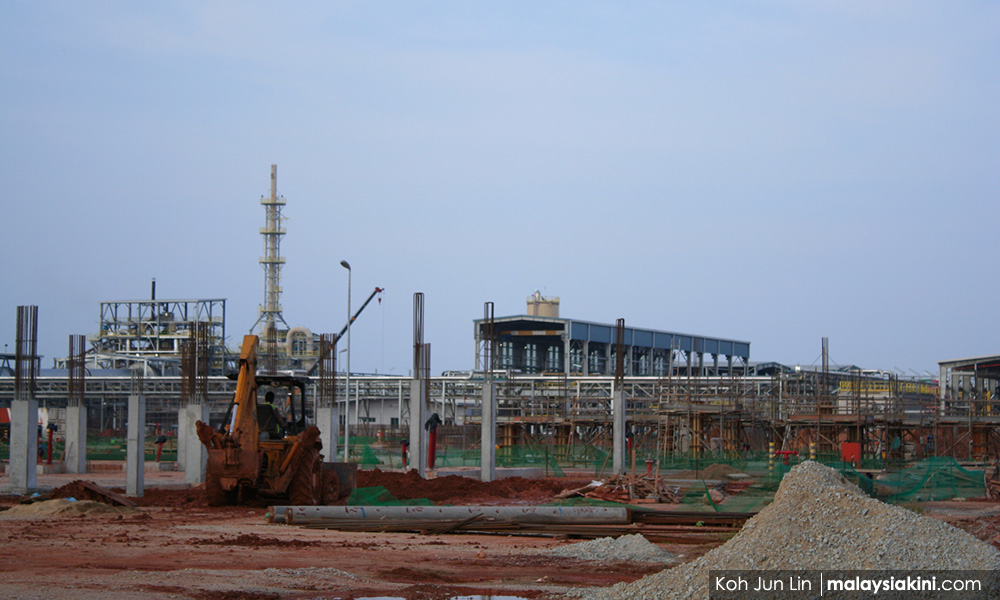
FACT CHECK | Entrepreneurship Minister Mohd Redzuan Othman’s statement that the controversial Lynas Advanced Material Plant (Lamp) can continue operations has ignited another battle between the facility’s most ardent opponent, Deputy Minister in the Prime Minister’s Department Fuziah Salleh, and the Australian firm.
The contention is this - Fuziah said it's not about radioactivity, but heavy metals.
She added that the content in the groundwater under the Lynas facility has spiked since it started operation and it is endangering the people of Gebeng who access drinking water from wells.
In response, the firm contended that there is no indication the spike was Lynas’ fault.
Who is telling the truth? The short answer is, they both are. Here’s the breakdown:
Is there a spike in heavy metal content in groundwater under the Lynas plant?
Yes, according to the Ministry of Energy, Science, Technology, Environment and Climate Change (Mestecc) review committee.
The committee headed by scientist and sustainability expert Mazlin Mokhtar found that groundwater samples provided by Lynas had heavy metal content which went beyond the "Dutch Intervention Levels".
Dutch Standards are reference values used as a benchmark for environmental quality. Groundwater is considered contaminated if it is above the set intervention levels.

“The committee found non-compliance in several heavy metals (nickel, lead, chromium and mercury) in groundwater to be concerning, especially for nickel and chromium…
“On March 15, 2016, nickel concentration at the GW13 monitoring station was at its highest at 96,100 μg/L, that is 1,281 times the Dutch Intervention Value of 75 μg/L,” the report published last December said.
Some stations also recorded more than double the intervention level of chromium and six times the intervention level of mercury.
The environment impact assessment (EIA) also mentions a spike
The Lynas-commissioned EIA for its proposed waste storage facility also acknowledged there were “fluctuations” in the concentrations of measured heavy metals from the year 2015 onwards. The plant began operations in mid-2015.
It found spikes at various intervals for metals including lead, barium, chromium, mercury and zinc.

In the case of lead, the concentration levels breached standards set by the Department of Environment by more than double at three monitoring stations in May 2018.
For chromium, it went from undetected in 2011 to 657 μg/L in July 2018, at one of the monitoring stations, breaching DOE’s standards of 50 μg/L and Dutch Intervention Level of 30μg/L.
In March 2018, it found mercury levels spiked to 11.1 μg/L, more than three times the Dutch Intervention Levels.
Is it Lynas’ fault?
We don’t know. But we do know there was no heavy metal contamination in groundwater at the same stations before the plant started operation.
We also know that the groundwater monitoring stations are located in the Lynas Advanced Materials Plant complex.

In 2007, nickel, chromium and mercury levels were all below 10 μg/L, with most so low that they were not detected, the Mestecc committee found.
Similarly, the Lynas-commissioned EIA found levels were “undetectable to low” compared in 2011.
It also stated that in the worst-case scenario, “heavy metals will likely be the major contaminants in terms of groundwater contamination”.
Crucially, however, the EIA attributed the spikes to “off-site sources and natural occurrences”.
For now, Lynas said it is investigating to see if the heavy metals are caused by contamination from its operation.

The Mestecc committee also does not conclusively finger Lynas for the groundwater contamination.
Rather, it expressed “concern” and sought further investigations, including in residential areas surrounding the plant like in Sungai Ular and Balok where 50 households rely on wells for drinking water supply.
Heavy metals in the by-product, too
Interestingly, heavy metals also figure in Mestecc committee warning against immediate roll out of condisoil - a soil conditioner Lynas wants to make using its waste. Condisoil is meant for padi, corn, coconut and cattle-grass cultivation.
The committee reported higher levels of heavy metal contents detected after condisoil was used at a corn plantation near Bukit Goh, during a trial run.
It said even though processing has managed to reduce radioactivity levels of the by-product to permissible levels, such radionuclide and heavy metal content may pose a risk when condisoil is used in large quantities.
It suggested more testing and for longer periods. - Mkini
Not radioactivity that Fuziah was concerned about? I thought I read that she mentioned that Lynas will destroy Malaysia for over 14 billion years. If it is the water contamination that she is worried about then this is simple. If this is from Lynas operation then either Lynas can shut or they can fix the problem.
ReplyDeleteBut I think this is as a result of bauxite mining. Lynas mentioned that this should tested independently so the result can be considered as non biased. Lynas already have their own testing.
Why not wait for the results before jumping to conclusions.
Another FAKE news article
ReplyDelete